Two Negative Forces at Play
Deep into the coronavirus crisis, the retail sales landscape is about to undergo some significant alteration. Many categories of shop-keeping will see significant declines in revenue, while a few might manage to hold the line or even make gains.

Two negative forces are taking huge tolls: (1) a staggering number of job losses, with more being implemented daily; and (2) government and health directives warning everyone, if possible, to stay at home.
Point (1) will be mitigated to some degree by unemployment insurance guarantees and extensions and by various wage supplement plans.
Point (2) provides an incentive to accelerate the already-underway trend to do more household shopping online.
Entering this Spring, U.S. consumer spending was chugging along at a decent enough rate, +4.2% year over year, although +5.0% or above is usually taken to be the benchmark for commendable growth (Graph 1).
The retail spending picture in Canada has been less satisfactory. It’s fallen short of +5.0% y/y for more than two years. In the latest month for which data is available, January 2020, it was +3.4% (Graph 5).
By Shopkeeper Category, Present and Future Sales Prospects
According to the shopkeeper categories appearing down the vertical axis in Graph 2, some conclusions to be drawn concerning present and future sales prospects are as follows.
Non-store retailers ‒ The ‘non-store retailer’ sub-category may be the one ship that will travel through this storm with sails (and sales) intact. Not only will many more purchases of everyday items be made by digital means as individuals and families are confined to their homes, but there will also be a side array of downloaded computer-equipment and software purchases to permit even more Internet shopping. In other words, there will be a spiraling upwards effect.
Food services and drinking places ‒ The fate of bars and restaurants may be the saddest story in this novel coronavirus tale. They’re primary victims in all the strictures against public gatherings. Some are soldiering on through take-out ordering and home deliveries.
Building materials and garden equipment ‒ In those locations where nonresidential construction is being allowed to continue, building material vendors may be able to struggle along. Another source of support may come from do-it-yourself home renovation projects that are finally initiated (i.e., after sitting on to-do lists for years).
Motor vehicle and parts dealers ‒ Purchases of big-ticket items, such as cars, will be delayed for the duration of the virus-induced downtime. A certain number of ‘parts’ retailers, though, will need to remain open. They’ll be ‘essential’ to keeping the economy’s motorized arteries open.
Food and beverage stores ‒ We all have a need to eat and not everyone is both mentally prepared and computer-equipped to shop online for groceries. Hence, there’s still the trek to a local store for milk, bread, meats, fruit and vegetables (and maybe some chocolate). Liquor stores are being judged ‘essential’ for a reason that would escape most people. There’s a concern that if dependent alcohol drinkers were denied their ‘sustenance’, they might end up in the hospital, taking away beds badly needed for alternative purposes.
Furniture and home furnishings ‒ Showrooms are closed. Buying sofas, rugs, lamps, dining tables, cabinets and other accoutrements from online vendors is still an undertaking pursued mainly by the adventurous.
Gasoline stations ‒ The precipitous drop in the price of petrol will drastically reduce receipts being rung up at cash registers. Just the same, gas stations may be luckier (although that’s a debatable word choice) than most other retail outlets. They’ll be staying open to keep merchandise delivery vehicles on the road.
General merchandise stores ‒ Even if they are open, walk-in traffic will be greatly reduced. If they are anchor tenants in shopping malls, they’ll face a special challenge. Early indications are that mall owners are disinclined to waive rental payments, even temporarily.
Health and personal care stores ‒ CVS and Walgreens are hiring more staff to satisfy an upsurge in walk-in and online demand.
Electronics and appliances ‒ Purchases of the latter will be put on hold. Purchases of the former, if they can be made online, may be given a boost by stay-at-home boredom.
Graph 1: Total Retail Sales in U.S. Monthly
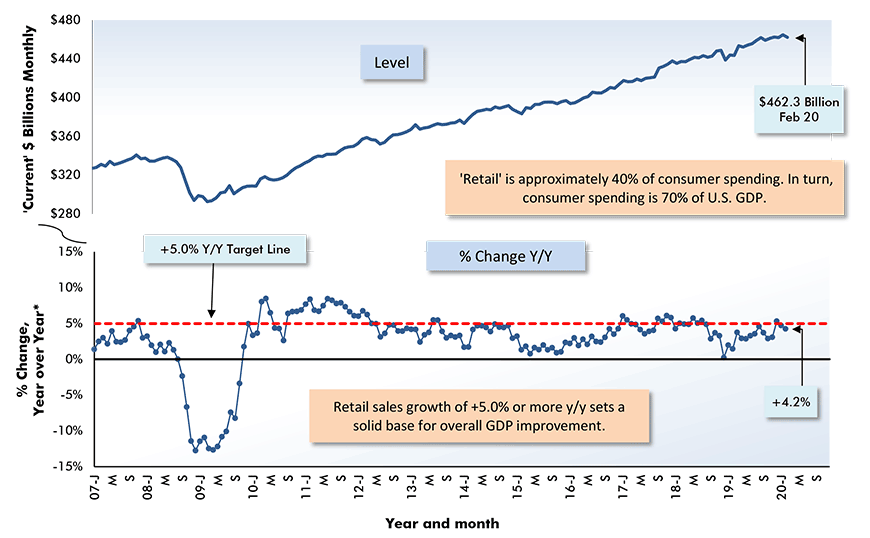
Adjusted for seasonality and trading day differences, but not for price changes (i.e., figures are in ‘current’ dollars).
Graph 2: U.S. Retail & Food Services Sales Y/Y – February 2020
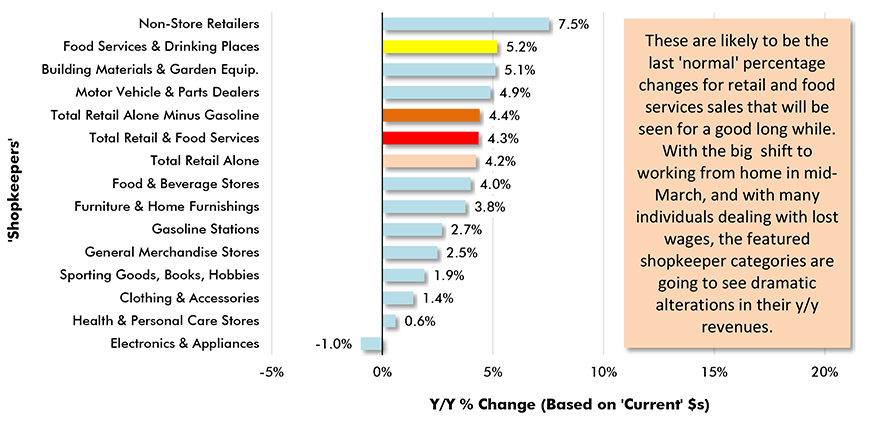
Graph 3: U.S. Home-related Retail Sales − Three Months Smoothed
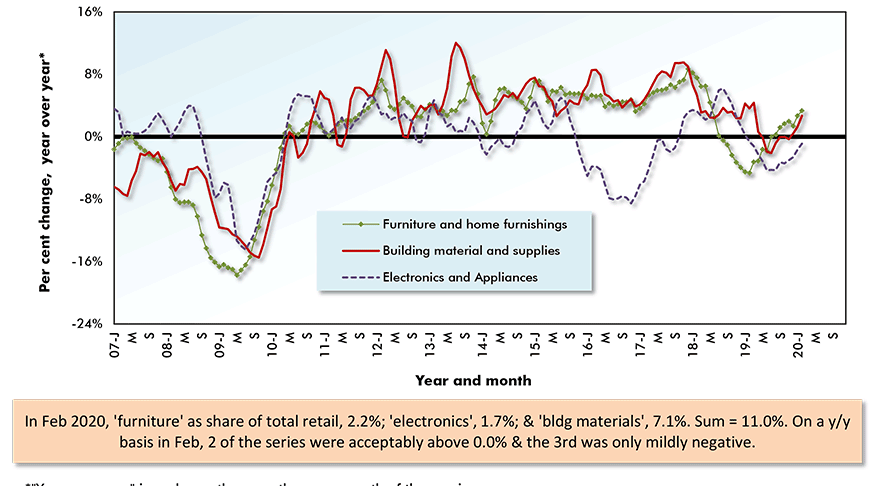
Based on three-month moving averages of current dollar adjusted data. Latest data points are for February 2020.
Adjustments are for seasonal variation, holiday and trading day differences, but not for price changes.
Graph 4: Year-Over-Year (Y/Y) U.S. Monthly Sales,
Retail vs Food Services & Drinking Places
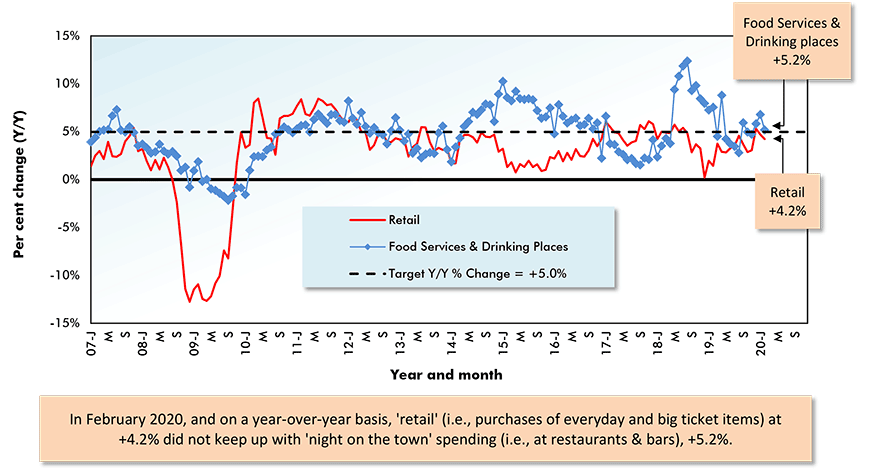
Current dollars, with adjustments made for seasonal variation, holiday & trading day differences, but not for price changes.
Graph 5: Total Retail Sales in Canada Monthly
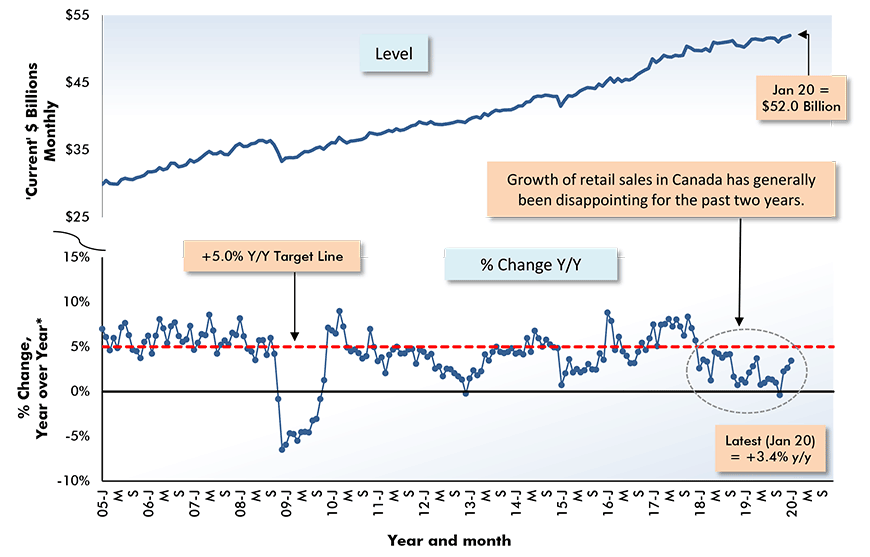
Data is seasonally adjusted. Also, figures are in ‘current’ $s (i.e., no account has been taken for inflation).
Alex Carrick is Chief Economist for ConstructConnect. He has delivered presentations throughout North America on the U.S., Canadian and world construction outlooks. Mr. Carrick has been with the company since 1985. Links to his numerous articles are featured on Twitter @ConstructConnx, which has 50,000 followers.











Recent Comments
comments for this post are closed